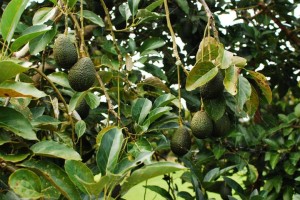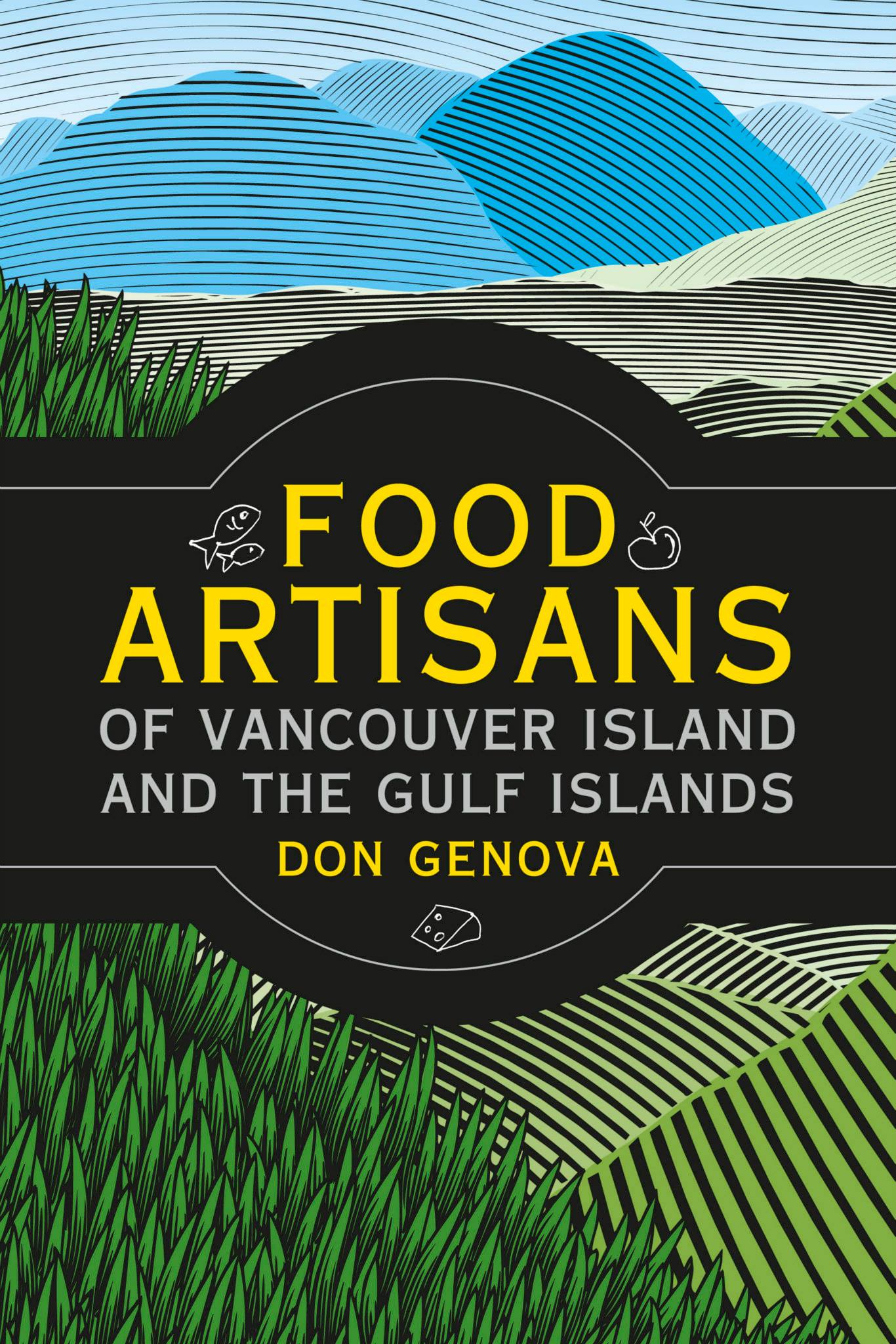
Avocado Tree in Hawaii
It’s sometimes called the Alligator Pear, because of its shape and rippled skin. But the avocado has no real bite to it, a rather mildly-flavoured fruit that gets consumed on a daily basis around the world. My consumption of avocados has just made a leap as I’ve been cooking my way through a new avocado cookbook written by a Vancouver Island author.
I haven’t always been a big fan of the avocado. I can’t ever remember my mother buying an avocado when I lived at home. Guacamole, the dip featuring most common use of avocado, wasn’t even in my vocabulary. When I finally did taste guacamole, I didn’t really like it. Then I think when I moved to BC and I started eating the ubiquitous California Roll, I started to come around. That being said, it’s my wife who insists on always buying avocados when we’re out shopping, and she is the one who makes the guacamole, or puts it in our salad and sandwiches.

Elizabeth Nyland

Cooking with Avocados
But this week I picked up a new cookbook, simply called Cooking with Avocados, by Elizabeth Nyland of Sidney. You may remember me talking about her first cookbook, Cooking with Coconut Oil, which has been doing very well for her. This book continues her work in bringing more ways to us to use a healthy food. It turns out Elizabeth was not that familiar with avocados earlier in her life, either: “So I think the first time I bought an avocado was when I moved out on my own, probably in my early 20’s. My family didn’t buy them because they could be expensive, and because they were seen as being high in calories, and my father especially didn’t want that.”
In fact, Elizabeth’s grandmother used to tell her father not to eat avocados too often because they were very fattening and even wrote ‘300’ on the skin to remind her of the high calorie content. They may be high in calories, but they are full of good things, too. While 85 percent of the calories in an avocado come from fat, that fat is monounsaturated, just like olive oil, which can help reduce bad cholesterol and increase good cholesterol, they’re known as anti-inflammatories, rich in potassium, B-Vitamins and help to increase your absorption of healthy nutrients. So in doing her research for the cookbook, Elizabeth discovered that you can use avocado as a substitute for butter in many recipes.
The avocado is a fruit you have to think about ahead of time when you want to use one. If they aren’t ripe, just forget about it. But how do you tell if they are ripe? Elizabeth has a great tip. When you buy a few avocados and bring them home, you can flip off the remnant of the stem. If the flesh under the stem looks that perfect shade of avocado green, it’s ready. You can also look at the skin. Bright green, not ripe. In between green and black, probably ripe. Black, forget about it. It’s probably started to rot. A ripe avocado will have just a little bit of give to it when you press it gently near the stem end.
In the cookbook, Elizabeth also shows you how to properly cut and peel an avocado in the book, and here’s a new one for me. Say you just want to use half an avocado. How to keep it from going brown? She says leave it in the skin and put it into a bowl of water to which you have stirred in 1 teaspoon of salt. Put it in the fridge and it will NOT go brown for about 24 hours.
Recipes in Cooking With Avocados cover breakfast, lunch, dinner, snacks and desserts. I’ve tried three recipes so far (see photos below), all with great success. You can also watch Elizabeth in action, next Saturday, September 6th at the Victoria Public Market. She’ll be doing a cooking demo there at 12 noon and I am going to be her willing and able assistant…and I think those meatballs are going to make an appearance as well.
- Avocado-stuffed meatballs
- Avocado, cucumber and coconut milk soup
- Avocado Rice Pudding





